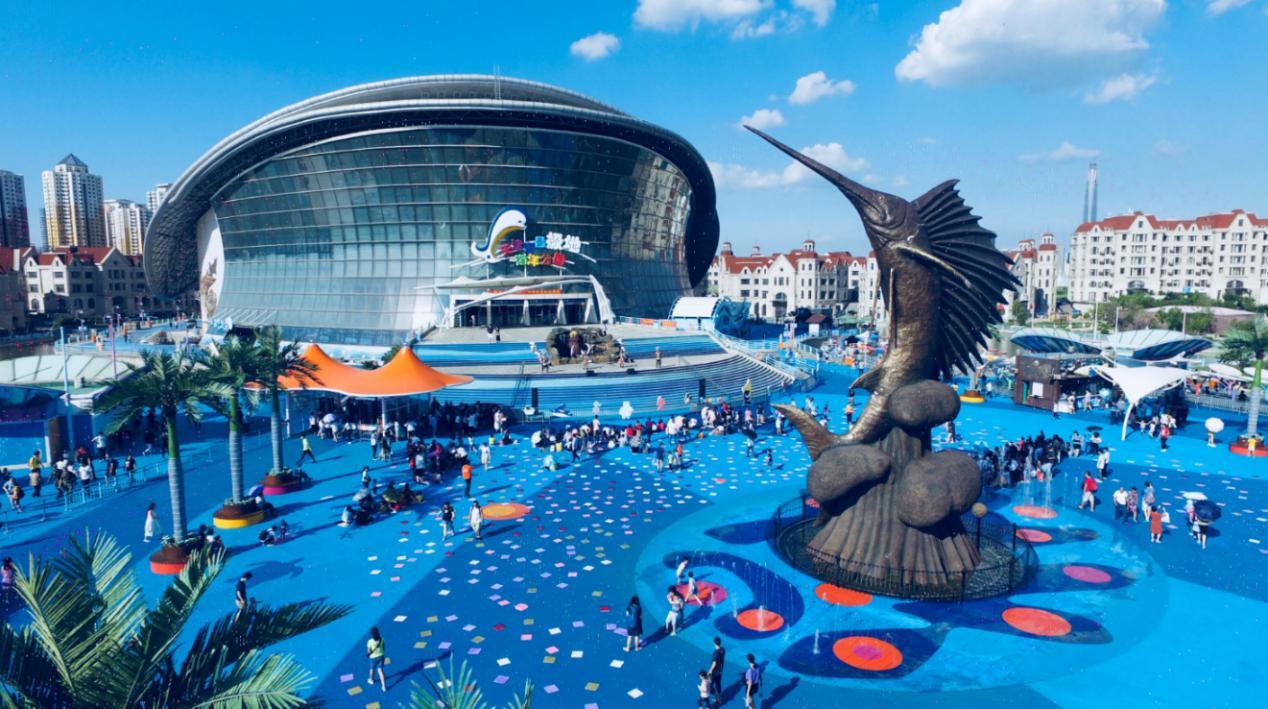
Deutsch-Chinesische Enzyklopädie, 德汉百科
 天津市-津
天津市-津
 安徽省-皖
安徽省-皖
 北京市-京
北京市-京
 福建省-闽
福建省-闽
 甘肃省-陇
甘肃省-陇
 广东省-粤
广东省-粤
 广西壮族自治区-桂
广西壮族自治区-桂
 贵州省-黔
贵州省-黔
 河北省-冀
河北省-冀
 河南省-豫
河南省-豫
 湖北省-鄂
湖北省-鄂
 湖南省-湘
湖南省-湘
 江苏省-苏
江苏省-苏
 江西省-赣
江西省-赣
 内蒙古自治区-内蒙古
内蒙古自治区-内蒙古
 宁夏回族自治区-宁
宁夏回族自治区-宁
 青海省-青
青海省-青
 陕西省-陕
陕西省-陕
 山东省-鲁
山东省-鲁
 陕西省-陕
陕西省-陕
 四川省-蜀
四川省-蜀
 天津市-津
天津市-津
 新疆维吾尔自治区-新
新疆维吾尔自治区-新
 浙江省-浙
浙江省-浙

唐朝(618年-907年),中国历史上的朝代,国祚共历289年,21位皇帝。由唐高祖李渊所建立。唐室出身自关陇世族,先祖李虎在南北朝的西魏是八柱国之一,封为唐国公[1]:254。其后代李渊为隋朝晋阳(在今山西太原西南)留守,在隋末民变时出兵入关中以争夺天下,于618年受隋恭帝杨侑禅位,在唐朝统一战争中统一天下。唐朝定都长安(今陕西省西安市),690年到705年为武周,定都神都洛阳[2]。
唐朝历史可以概略分成数个时期,大致上以安史之乱为界。初唐时国力强盛,李渊建立唐朝,是为唐高祖,其子秦王李世民以玄武门之变,杀害兄李建成、弟李元吉,逼迫高祖内禅帝位,即为唐太宗,是唐朝多次首都兵变的开端。太宗一手将唐朝带向盛世,击败强敌东突厥,受尊为“天可汗”,成就贞观之治。唐高宗时期击败西突厥、高句丽等强敌,建立永徽之治,把唐朝版图扩到最大。高宗去世后,其皇后武后先后拥立儿子中宗和睿宗当傀儡,最后于690年废睿宗自立为皇帝,改国号曰“周”,即武周,人称“武则天”,而此时女主政治也达到高峰。直到705年中宗因神龙革命而复辟,唐朝国号得以恢复。但接着还有韦后专权,之后宗室李隆基与其姑姑太平公主共同发起唐隆之变,才扫荡韦氏势力,结束自从中宗复辟后朝政紊乱的情况。李隆基也实际掌权,成为日后的唐玄宗。玄宗即位后便发动先天之变,赐死太平公主,结束数十年来的女主政治与百年来的政变时代,进入盛唐时期,是唐朝的第二高峰与转折,开元时期唐玄宗革除前朝弊端,政治开明,威服四周国家,史称开元盛世[3]:36。到天宝时期,政治逐渐混乱,于755年爆发安史之乱,唐朝盛极而衰。中唐时,唐朝受到河朔三镇、吐蕃的侵扰、宦官专权与牛李党争等内忧外患的影响而衰退。其间虽然有唐宪宗的元和中兴、唐武宗的会昌中兴与唐宣宗的大中之治,但是都未能根治唐朝的内忧外患。在晚唐时因为政治腐败,爆发唐末民变,其中黄巢之乱破坏江南经济,使唐朝经济完全瓦解,导致全国性的藩镇割据。唐室最后被藩镇朱全忠控制,他迫使唐昭宗迁都洛阳,并于907年逼唐哀帝禅位,唐灭亡,共289年。朱全忠建国梁,史称后梁,进入五代十国时期[4]:424。
唐朝的疆域广大,但时常变动,630年就超过隋朝极盛时的版图。唐朝也是自秦汉以来,第一个不使用前朝所筑长城及不筑长城的统一王朝[5][6][7]。其鼎盛时期为7世纪,当时中亚的绿洲地带受唐朝支配。其最大范围南至罗伏州(今越南河静)、北括玄阙州(今俄罗斯安加拉河流域)、西及安息州(今乌兹别克斯坦布哈拉)、东临哥勿州(今吉林通化)的辽阔疆域[8],国土面积达1076万平方千米[9]。中唐后漠北、西域的领地相继失去,到晚唐时衰退到等同中国本部的大小,但仍然保有河套地区及河西走廊[3]:36。天宝十三年(754年)户口统计为五千二百八十八万四百八十八人[10],不过许多学者考虑到当时统计不严,存在大量没有计入统计的瞒报户口[11],此外还有隐户、佃农、奴婢、士兵、僧道等人群不纳入户口统计,故大多数学者认为唐朝人口峰值在八千万左右[12][13][14]。此时,京兆府辖区人口估算在200万人左右,而市区则是100万人[15][16][17][18][19]。
唐朝在文化、科技、政治、经济、外交等方面都达到很高的成就。在中国历史上有大量的科技发明,四大发明中的火药即诞生于唐朝、雕版印刷开始广泛应用。其政治为三省六部制,前期中央权力在皇帝与宰相,中后期宦官影响力大增。同隋朝推行科举制度,使得晋朝南朝的世族制度不再兴起,中国历史上第一个状元、三元及第,都诞生于唐朝,即622年状元孙伏伽(一说651年的颜康成)[20]。军事制度前期采用府兵制,军力强盛,多次击败外族。后期则出现节度使(藩镇)的军政制度,割据一方,到唐朝后期还出现四十八个藩镇。唐朝是当时世界的强国,与突厥、高句丽、吐蕃、大食争夺四方霸权。借由羁縻制度控制回纥、契丹等北方各族,还调度漠北地区的突厥诸部军队攻打西突厥、高句丽[21],并且让南诏、高昌、龟兹、粟特、吐蕃、新罗、渤海国和日本等国家吸收唐朝的文化与政治体制[3]:38。唐朝的经济富盛,结合华北、关中与江南的经济,到后期更加依重江南赋税。土地、盐铁与赋税制度随着社会改变而改革,由均田制与租庸调制转向两税制,并且增加许多杂税。其中两税制影响中国后半期的赋税制度[4]:424。唐朝文化兼容并蓄,接纳各个民族与宗教,进行交流融合,成为开放的国际文化[22]:126。其文学发展达到高峰,以诗最为兴盛。当时有李白、杜甫等诗人,以及推行古文运动的韩愈,其史书与传奇(小说的前身)也十分发达。由于吸收西域特征与宗教色彩,唐朝艺术与前后朝代都迥然不同,其壁画、雕刻、书法与音乐都很发达[23]:758。唐朝声誉远及海外,其历史地位深重,到明清时期海外多称中国人为“唐人”[24]。
Die Tang-Dynastie (618-907) hatte 20 Kaiser und eine Kaiserin aus 14 Generationen und war mit einer Dauer von 289 Jahren die längste Dynastie in der chinesischen Geschichte. Davon fiel fast die Hälfte der Dauer mit fast 130 Jahren auf das sogenannte Goldene Zeitalter.
Aufstieg und Entwicklung zum Goldenen Zeitalter
唐(とう、拼音: 、618年 - 907年)は、中国の王朝である。李淵が隋を滅ぼして建国した。7世紀の最盛期には、中央アジアの砂漠地帯も支配する大帝国で、中央アジアや、東南アジア、北東アジア諸国、例えば朝鮮半島や渤海、日本などに、政制・文化などの面で多大な影響を与えた世界帝国である。日本の場合は遣唐使などを送り、894年(寛平6年)に菅原道真の意見でその回の遣唐使を中止し、結果としてそれ以降遣唐使は送られず、それまでは積極的な交流をしていた。首都は長安に置かれた。
690年に唐王朝は廃されて武周王朝が建てられたが、705年に武則天が失脚して唐が復活したことにより、この時代も唐の歴史に含めて叙述することが通例である。
日本では唐の滅亡後も唐、唐土の語はそれ以降の王朝、さらには外国全般を漠然と指す語として用いられた。しかし、天竺同様昔の呼称のため、正確に対応するわけではない。詳しくは中国を参照のこと。
The Tang dynasty (/tɑːŋ/;[4] Chinese: 唐朝[a]) or the Tang Empire was an imperial dynasty of China, preceded by the Sui dynasty and followed by the Five Dynasties and Ten Kingdoms period. Historians generally regard the Tang as a high point in Chinese civilization, and a golden age of cosmopolitan culture.[6] Tang territory, acquired through the military campaigns of its early rulers, rivaled that of the Han dynasty. The Tang capital at Chang'an (present-day Xi'an) was the most populous city in the world in its day.
The Lǐ family (李) founded the dynasty, seizing power during the decline and collapse of the Sui Empire. The dynasty was briefly interrupted when Empress Wu Zetian seized the throne, proclaiming the Second Zhou dynasty (690–705) and becoming the only Chinese empress regnant. In two censuses of the 7th and 8th centuries, the Tang records estimated the population by number of registered households at about 50 million people.[7][8] Yet, even when the central government was breaking down and unable to compile an accurate census of the population in the 9th century, it is estimated that the population had grown by then to about 80 million people.[9][10][b] With its large population base, the dynasty was able to raise professional and conscripted armies of hundreds of thousands of troops to contend with nomadic powers in dominating Inner Asia and the lucrative trade-routes along the Silk Road. Various kingdoms and states paid tribute to the Tang court, while the Tang also conquered or subdued several regions which it indirectly controlled through a protectorate system. Besides political hegemony, the Tang also exerted a powerful cultural influence over neighboring East Asian states such as those in Japan and Korea.
The Tang dynasty was largely a period of progress and stability in the first half of the dynasty's rule, until the An Lushan Rebellion and the decline of central authority in the later half of the dynasty. Like the previous Sui dynasty, the Tang dynasty maintained a civil-service system by recruiting scholar-officials through standardized examinations and recommendations to office. The rise of regional military governors known as jiedushi during the 9th century undermined this civil order. Chinese culture flourished and further matured during the Tang era; it is traditionally considered the greatest age for Chinese poetry.[11] Two of China's most famous poets, Li Bai and Du Fu, belonged to this age, as did many famous painters such as Han Gan, Zhang Xuan, and Zhou Fang. Scholars of this period compiled a rich variety of historical literature, as well as encyclopedias and geographical works. The adoption of the title Tängri Qaghan by the Tang Emperor Taizong in addition to his title as emperor was eastern Asia's first "simultaneous kingship".[12]
Many notable innovations occurred under the Tang, including the development of woodblock printing. Buddhism became a major influence in Chinese culture, with native Chinese sects gaining prominence. However, in the 840s the Emperor Wuzong of Tang enacted policies to persecute Buddhism, which subsequently declined in influence. Although the dynasty and central government had gone into decline by the 9th century, art and culture continued to flourish. The weakened central government largely withdrew from managing the economy, but the country's mercantile affairs stayed intact and commercial trade continued to thrive regardless. However, agrarian rebellions in the latter half of the 9th century resulted in damaging atrocities such as the Guangzhou massacre of 878–879.
La dynastie Tang (chinois : 唐朝 ; Wade : T'ang ; EFEO : T'ang, Ten quelquefois) (18 juin 618 - 1er juin 907) est une dynastie chinoise précédée par la dynastie Sui (581-618) et suivie par la période des Cinq Dynasties et des Dix Royaumes. Elle a été fondée par la famille Li, qui prit le pouvoir durant le déclin et la chute de l'empire Sui.
Venant après une longue période de division de la Chine qui dura de 220 à 581, à laquelle l'éphémère dynastie Sui avait mis fin, les premiers empereurs de cette dynastie eurent d'abord pour tâche de stabiliser l'empire récemment réunifié, et de lui redonner la puissance qu'avait eue la Chine à l'époque des Han. Ils firent rapidement mieux que ces derniers dans le domaine des conquêtes extérieures. Sous les premiers empereurs Tang (en particulier Taizong, l'impératrice Wu Zetian et Xuanzong), l'empire chinois connut une période de prospérité et un rayonnement culturel considérable. Sa capitale Chang'an, la plus grande ville du monde, reflétait toute la puissance et le cosmopolitisme, qui reposait notamment sur le dynamisme des échanges à longue distance le long de la route de la soie et des voies maritimes méridionales. Cette période a été vue par les générations suivantes comme un véritable âge d'or de la civilisation chinoise, symbolisé notamment par les brillants poètes Li Bai et Du Fu, et plus largement l'émergence d'un groupe de nombreux lettrés passés par les examens impériaux qui furent mis en place par les premiers empereurs Tang.
L'histoire de la dynastie bascula en 755 avec la révolte d'An Lushan, conséquence dramatique des évolutions politiques et militaires de l'empire à la période de son apogée. Après la difficile répression de ce soulèvement, l'organisation de l'empire se présenta sous un jour nouveau : la vieille aristocratie qui l'appuyait déclina irrémédiablement, supplantée par des hommes nouveaux disposant des charges militaires provinciales les plus importantes ou des grandes commissions fiscales et financières. Les empereurs ne parvinrent pas à contenir les forces centrifuges qui leur firent perdre l'autorité sur leurs provinces, même si cela n'entrava pas la prospérité de leur empire, portée par l'expansion démographique et économique des régions du Sud. Après une série de révoltes dans les dernières décennies du IXe siècle, la dynastie Tang s'éteint en 907, alors que son empire avait été dépecé. Les évolutions politiques, sociales, économiques et intellectuelles de cette période avaient déjà fait pénétrer la Chine dans une période que les historiens considèrent couramment comme « moderne », annonciatrice de la période de la dynastie Song (960-1272) qui réunifia la Chine quelques décennies après la fin des Tang.
Plusieurs innovations importantes sont apparues durant la dynastie Tang, dont le développement des caractères d'imprimerie en bois. Dans le domaine religieux, le bouddhisme eut une influence majeure dans la culture chinoise, avec l'affirmation de sectes bouddhistes aux racines spécifiquement chinoises et le développement d'un art remarquable. Toutefois, cette religion fut par la suite persécutée et son influence déclina, tandis que le taoïsme conservait une grande importance et que s'amorçait le retour du confucianisme, porté par les écrits de Han Yu.
La dinastia Tang (唐朝T, TángcháoP, 618-907) seguì la dinastia Sui, che aveva riportato l'unità politica in Cina, e fu seguita da un'epoca di disunione nota come il periodo delle Cinque dinastie e dieci regni.
Gli effetti del suddetto consolidamento iniziano a notarsi sotto l'imperatore Tai Zong (627 – 649), che ristabilisce il protettorato cinese sulla regione del bacino del Tarim (Asia centrale). Egli unisce la casa imperiale del Tibet alla Cina tramite matrimonio, intraprende la conquista della Corea e mantiene relazioni con il Giappone e i reami del Funan e del Champa. Con l'imperatore Xuan Zong (713 – 756) la Cina conosce un periodo di pace e prosperità, che favorisce il fiorire di produzioni artistiche.
La dinastía Tang (chino simplificado y tradicional: 唐朝, pinyin: Táng Cháo, Wade-Giles: T'ang2 Ch'ao2; ![]() tʰɑ̌ŋ tʂʰɑ̌ʊ̯ (?·i)) (618-907) fue la sucesora de la dinastía Sui y predecesora del período de las Cinco Dinastías y los Diez Reinos en China. La dinastía fue interrumpida por la segunda dinastía Zhou (690-705), cuando la emperatriz Wu Zetian usurpó el trono y fundó su propia dinastía. La dinastía Tang, con su capital en Chang'an (actual Xi'an), la ciudad más poblada del mundo en ese entonces, está considerada por los historiadores como un momento de esplendor de la civilización china, igual —o incluso superior— al del período Han.
tʰɑ̌ŋ tʂʰɑ̌ʊ̯ (?·i)) (618-907) fue la sucesora de la dinastía Sui y predecesora del período de las Cinco Dinastías y los Diez Reinos en China. La dinastía fue interrumpida por la segunda dinastía Zhou (690-705), cuando la emperatriz Wu Zetian usurpó el trono y fundó su propia dinastía. La dinastía Tang, con su capital en Chang'an (actual Xi'an), la ciudad más poblada del mundo en ese entonces, está considerada por los historiadores como un momento de esplendor de la civilización china, igual —o incluso superior— al del período Han.
Эпоха Тан (Династия Ли 李) (18 июня 618 — 4 июня 907, кит. 唐朝, Танчао) — китайская императорская династия, основанная Ли Юанем. Его сын, император Ли Шиминь, после окончательного подавления крестьянских восстаний и сепаратистских феодальных сил начал проводить прогрессивную политику. Именно эпоха Тан традиционно считается в Китае периодом наивысшего могущества страны, когда она опережала остальные современные ей страны мира в своём развитии.
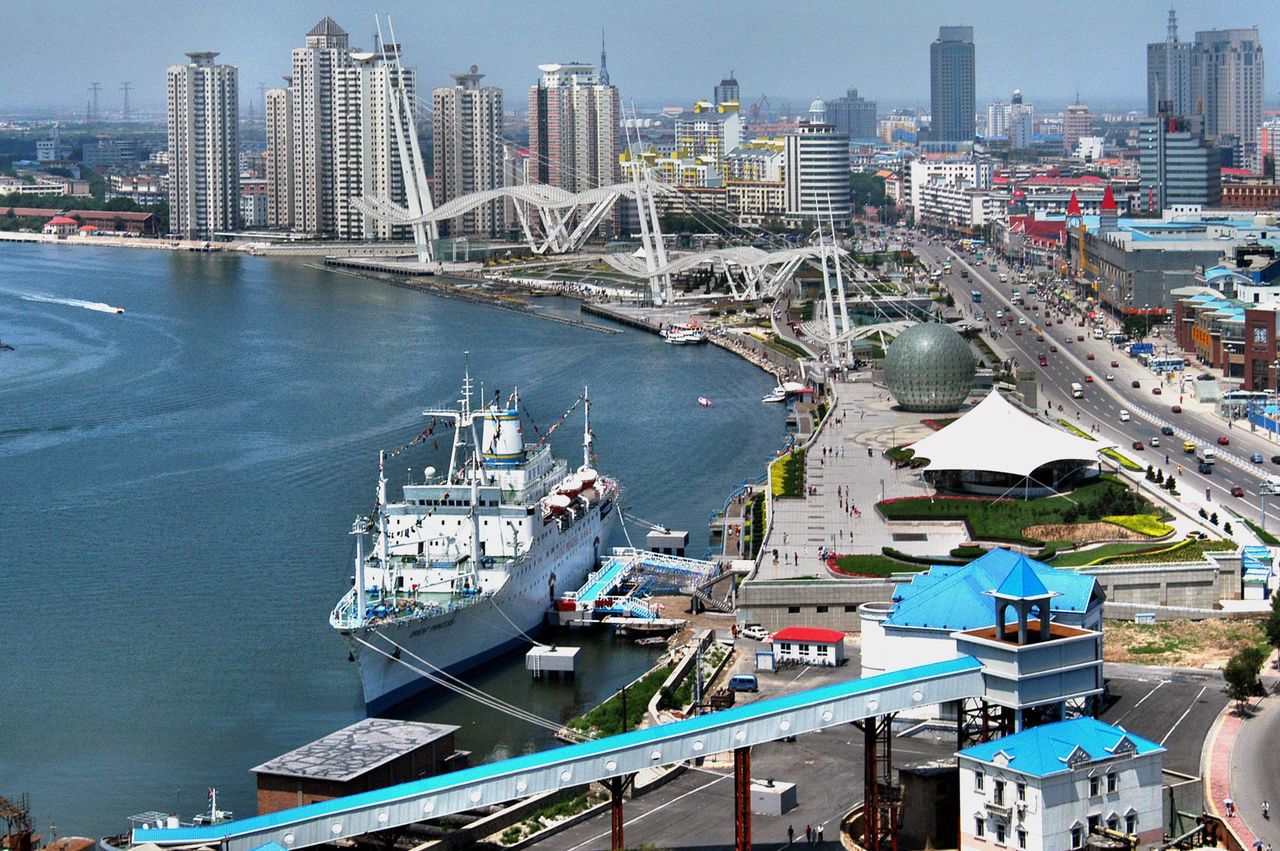




Tanggu (chin. 塘沽区, Tánggū Qū) ist ein chinesischer Stadtbezirk, der zum Verwaltungsgebiet der regierungsunmittelbaren Stadt Tianjin gehört. Er befindet sich im Osten von Tianjin an der Mündung des Hai He in die Bohai-Bucht des Bohai-Meeres. Tanggu hat eine Fläche von 758,9 km² und zählt ca. 488.300 Einwohner (2002).
Tanggu ist der Haupthafen der Region von und um Beijing, der sich von Tianjin hierher direkt an die Küste verlagert hat.
Im Stadtbezirk Tanggu befindet sich die Taku-Forts, welche auf der Denkmalliste der Volksrepublik China stehen.

天津利顺德大饭店(英语:The Astor Hotel Tianjin,曾名亚细亚饭店、天津大饭店),始建于清同治二年(1863年),坐落于当时天津英租界的主干道维多利亚道(英语:Victoria Road)和维多利亚花园的东侧,即今天的天津市和平区解放北路199号和台儿庄路33号,作为原天津租界区现存极少的19世纪中叶建筑之一,天津利顺德饭店旧址被中华人民共和国国务院批准为全国重点文物保护单位[1],被天津市人民政府批准为特殊保护等级历史风貌建筑[2]。
天津利顺德大饭店是天津市历史上第一家外资大饭店,在近代史上曾是重要的外交活动场所,英国、美国、加拿大、日本等国家曾先后将领事馆设于酒店内。中国与西方国家在近代的诸多条约是在这里签署,孙中山、美国总统胡佛、英国国王爱德华八世、卓别林、梅兰芳等著名人士曾在此下榻或寓居。
 中国
中国
 中国足球超级联赛 2019
中国足球超级联赛 2019
 2007年女子世界杯足球
2007年女子世界杯足球
 京杭大运河
京杭大运河
 天津市-津
天津市-津
 世界经济论坛
世界经济论坛
 2008夏季达沃斯论坛
2008夏季达沃斯论坛
 世界经济论坛
世界经济论坛
 2010夏季达沃斯论坛
2010夏季达沃斯论坛
 世界经济论坛
世界经济论坛
 2012夏季达沃斯论坛
2012夏季达沃斯论坛
 世界经济论坛
世界经济论坛
 2014夏季达沃斯论坛
2014夏季达沃斯论坛
 世界经济论坛
世界经济论坛
 2016夏季达沃斯论坛
2016夏季达沃斯论坛
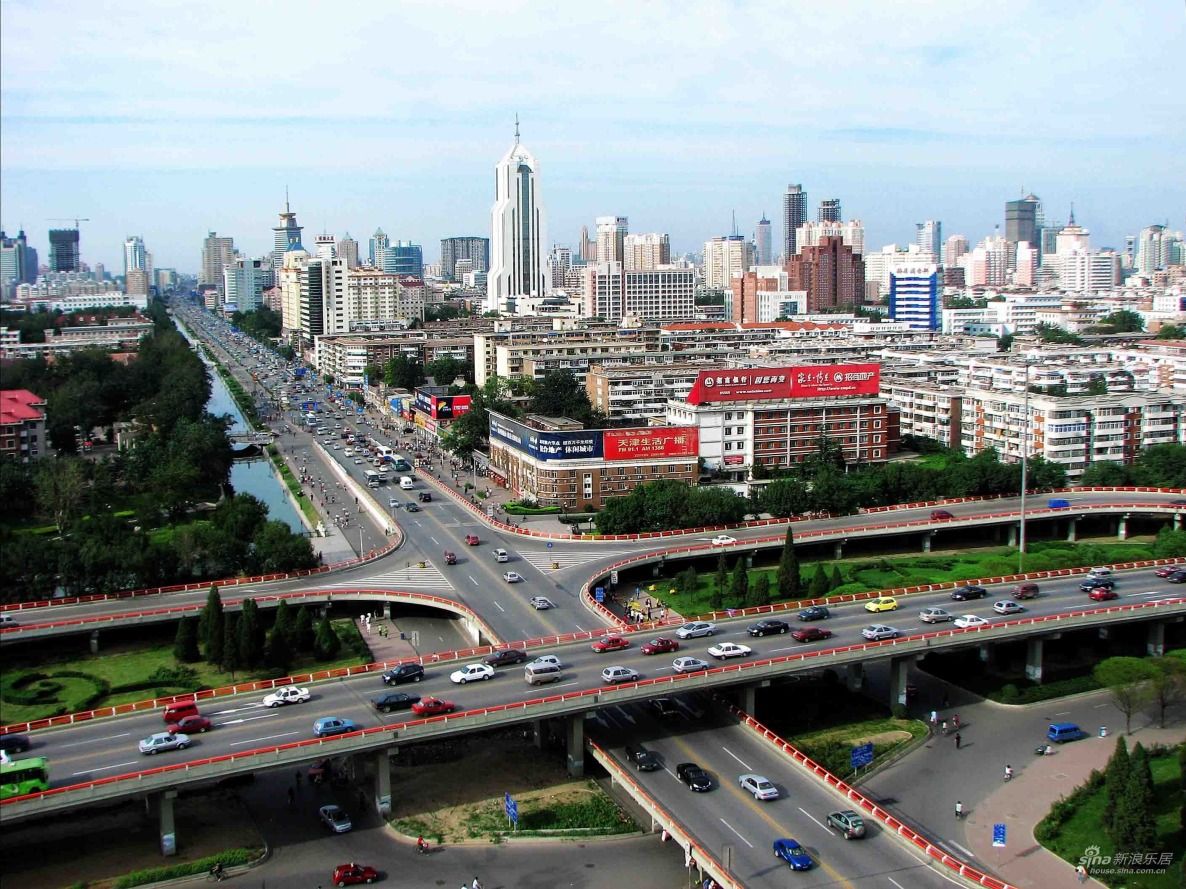
2014年12月12日,位于天津市滨海新区的中国(天津)自由贸易试验区正式获得国家批准设立。2015年4月21日,中国(天津)自由贸易试验区正式挂牌。中国(天津)自由贸易试验区为中国北方第一个自贸区。
天津市,简称津,是中华人民共和国直辖市、国家中心城市和中国北方最大沿海开放城市。天津位于华北平原的海河各支流交汇处,东临渤海,北依燕山;有海河在城中蜿蜒而过,跨越海河的各式桥梁形成了“一桥一景”的景致。
天津因漕运而兴起,1404年12月23日正式筑城[1]。自1860年天津开放为通商口岸后,西方多国在天津设立租界,洋务派亦在天津兴办实业,使天津成为中国北方开放的前沿和近代中国洋务运动的基地。在领风气之先的同时,天津近代工业、商业、金融业等发展迅速。由天津开始的军事、教育、司法、交通、通讯、工业等方面的近代化建设,均开中国之先河。天津成为当时中国第二大的工商业城市和北方最大的金融商贸中心。
2006年3月,国务院批复的《天津市总体规划》将天津完整定位为“国际港口城市、北方经济中心、生态城市”[2],并将“推进天津滨海新区开发开放”纳入国家发展战略,设立为国家综合配套改革试验区。2007年11月,中国、新加坡两国政府选址天津共同建设中新生态城。2015年4月,中国(天津)自由贸易试验区挂牌成立,成为中国长江以北唯一的自由贸易试验区。经过自1990年代开始的工业东移战略,天津市已经初步形成了“中心城区-滨海新区”和“天津港-天津南港”的双城双港的城市格局。2015年4月,《京津冀协同发展纲要》确定天津市为“全国先进制造研发基地、北方国际航运核心区、金融创新运营示范区和改革先行示范区”[3]。
天津市举办了2013年的第六届东亚运动会和2017年第十三届全运会[4],同时天津也是夏季达沃斯论坛的常驻举办城市。
Die Stadt Tianjin liegt am westlichen Ufer des Bohai-Meeres, nordöstlich der Ostchinesischen Tiefebene, genauer sagt auf den Koordinaten von 38°33’ bis 40°15’ nördlicher Breite und 116°42’ bis 11803’ östlicher Länge. Im Norden grenzt sie an Beijing, im Osten, Westen und Süden an die Städte Tangshan, Chengde, Langfang und Cangzhou in der Provinz Hebei. Tianjin nimmt eine Fläche von 11.305 Quadratkilometern ein und die Küstenlinie der Stadt beträgt 133 Kilometer. Der Name Tianjin ("der Kaiser macht eine Überfahrt") entstand in der Ming-Dynastie, als der Ort für den Kaiser zu einer verkehrsgünstigen Anbindung zum Süden des Landes wurde. Der Bau der Stadt begann im Jahre 1404, als dort die Tianjiner Garnision angelegt wurde. So ist die Stadt zu einem Militärstützpunkt geworden.(Quelle:german.china.org.cn/german/209484.htm)
Tianjin (chinesisch 天津市, Pinyin Tiānjīn shì, W.-G. T’ien-chin ‚wörtl.: Himmelsfurt-Stadt‘, veraltet: nach Post, Stange Tientsin) ist eine wichtige Hafenstadt in der Volksrepublik China. Das gesamte Verwaltungsgebiet der Stadt hat eine Fläche von 11.943 Quadratkilometern. Tianjin ist eine der vier Regierungsunmittelbaren Städte in China, das heißt direkt der Zentralregierung in Peking unterstellt und hat damit denselben Status wie eine Provinz.
Das gesamte Verwaltungsgebiet Tianjins hat 12,3 Millionen Einwohner (Jahresende 2009).[1] Davon sind 9,5 Millionen registrierte Bewohner mit ständigem Wohnsitz (户口, hùkǒu) und 1,0 Millionen temporäre Einwohner (流动人口, liúdòng rénkǒu) mit befristeter Aufenthaltsgenehmigung (暂住证, zànzhùzhèng). Wird die Kernstadt (hohe Bebauungsdichte und geschlossene Ortsform) als Grundlage genommen, leben in Tianjin 3,8 Millionen Menschen mit Hauptwohnsitz (2007).[2] Der Ballungsraum (einschließlich Vororte) hat 6,4 Millionen Einwohner (2007).[3]
Die Stadt ist Industriezentrum, Verkehrsknoten und kultureller Mittelpunkt der Region mit Universitäten, Hochschulen, Museen und Baudenkmälern. Das Verwaltungsgebiet Tianjins stellt kein zusammenhängendes Stadtgebiet dar, sondern wäre – mit seiner dominierenden ländlichen Siedlungsstruktur – eher mit einer kleinen Provinz vergleichbar. Historisch war Tianjin die Hauptstadt der ehemaligen Provinz Zhili.
天津市(てんしんし/テンチンし、簡体字: 天津市、拼音: 、英語: Tianjin)は、中華人民共和国に位置する直轄市。国家中心都市の一つ。略称は津。
天津は華北平原海河の五大支流の合流する所に位置し、東に渤海を、北に燕山を臨む。市内を流れる海河は天津の母親河とも呼ばれる。
環渤海湾地域の経済的中心地であり、中国北方最大の対外開放港である。首都北京市とは高速道路、高速直通列車、京津城際線によって、0.5〜2時間以内で結ばれている。元々は海河の河港であったが、河口の塘沽に大規模な港湾やコンテナターミナル、工業地帯が形成されている。経済成長率の高さはここ数年に渡り、全国トップである。2017年の第13期の全国体育大会の開催が決まっており、夏季ダボスフォーラム常駐開催都市でもある。
市区人口は506万人、都市圏人口は720万人。
Tianjin ([tʰjɛ́n.tɕín] (![]() listen)), formerly romanized as Tientsin, is a coastal metropolis in northern China and one of the nine national central cities of the People's Republic of China (PRC), with a total population of 15,469,500, and is also the world's 11th-most populous city proper.[5] It is governed as one of the four municipalities under the direct administration of central government of the PRC and is thus under direct administration of the central government. Tianjin borders Hebei Province and Beijing Municipality, bounded to the east by the Bohai Gulf portion of the Yellow Sea. Part of the Bohai Economic Rim, it is the largest coastal city in northern China.
listen)), formerly romanized as Tientsin, is a coastal metropolis in northern China and one of the nine national central cities of the People's Republic of China (PRC), with a total population of 15,469,500, and is also the world's 11th-most populous city proper.[5] It is governed as one of the four municipalities under the direct administration of central government of the PRC and is thus under direct administration of the central government. Tianjin borders Hebei Province and Beijing Municipality, bounded to the east by the Bohai Gulf portion of the Yellow Sea. Part of the Bohai Economic Rim, it is the largest coastal city in northern China.
In terms of urban population, Tianjin is the fourth largest in China, after Shanghai, Beijing, and Guangzhou. In terms of administrative area population, Tianjin ranks fifth in Mainland China.[6] The walled city of Tianjin was built in 1404. As a treaty port since 1860, Tianjin has been a major seaport and gateway to Beijing. During the Boxer Rebellion the city was the seat of the Tianjin Provisional Government. Under the Qing dynasty and the Republic of China, Tianjin became one of the largest cities in the region.[7] At that time, numerous European-style buildings and mansions were constructed in concessions, many of which are well-preserved today. After the founding of the People's Republic of China, Tianjin suffered a depression due to the policy of the central government and Tangshan earthquake, but recovered from 1990s.[8] Nowadays Tianjin is a dual-core city, with its main urban area (including the old city) located along the Hai River, which connects to the Yellow and Yangtze Rivers via the Grand Canal; and Binhai, a New Area urban core located east of the old city, on the coast of the Bohai Gulf. As of the end of 2010, around 285 Fortune 500 companies have set up base in Binhai.
Tien-Tsin ou Tientsin (en français)2 ou Tianjin (nom local en anglais)3 (en chinois : 天津市 ; pinyin : ; EFEO : T'ien-Tsin), est une municipalité autonome du nord-est de la République populaire de Chine. Avec une agglomération de plus de quinze millions d'habitants en 2014, il s'agit de la quatrième ville de Chine en nombre d'habitants, après Shanghai, Pékin et Canton. Tianjin est également l'une des quatre municipalités du pays qui sont directement gouvernées par le pouvoir central. Elle est part du Jing-Jin-Ji.
Durant l'Antiquité, Tianjin était un village portuaire alors appelé Zhigu. Avec l'ouverture du Grand Canal sous la dynastie Sui (581-618), la ville se développe et devient un port de commerce important. En 1404, l'empereur Yongle donne à la ville son nom actuel, qui signifie littéralement le « gué de l'Empereur »4 , marquant le fait que le souverain a traversé le fleuve à cet endroit. Quelques années plus tard, un fort connu sous le nom de fort de Tianjin (Tianjin Wei, 天津卫) y est établi. En 1725, la ville obtient le statut de préfecture. Au XIXe siècle, les Chinois et les puissances occidentales s'y affrontent dans le cadre de la Seconde guerre de l'opium : la défaite chinoise et le traité de Tianjin (1858) entraînent la création de concessions étrangères. Devenue une ville de notables, Tianjin est occupée en 1937 par l'armée impériale japonaise à la suite du déclenchement de la guerre sino-japonaise.
Située sur les rives du golfe de Bohai — un bras de la mer Jaune — la municipalité de Tianjin est frontalière de la province Hebei et de la municipalité de Pékin. Elle se divise en deux ensembles urbains : la ville de Tianjin proprement dite, avec le centre historique, située sur les rives du fleuve Hai He - qui rejoint le fleuve Jaune (Huang He) et le Yangzi Jiang via le Grand Canal - ; et Binhai, une ville nouvelle située à l'est du centre historique, sur les rives de la mer de Bohai. Cette dernière, ainsi que le district de Tanggu voisin, est une zone économique spéciale destinée à accueillir de nombreuses entreprises chinoises et internationales. Sa croissance économique est l'une des plus importantes de Chine : le PIB de Binhai a dépassé en 2010 celui de Pudong à Shanghai5.
Symbole de ce récent développement économique - autour de l'aéronautique et de l'électronique notamment -, plusieurs gratte-ciels sont actuellement en construction, comme la China 117 Tower ou le Tianjin International Trade Centre. La ville abrite également un musée d'art chinois, le mémorial dédié à Zhou Enlai (le Premier ministre de Mao Zedong), le Temple de la Grande Compassion, ainsi que l'ancienne cathédrale de la concession française, l’Église Notre-Dame des Victoires. Plus récemment, la ville a accueilli des compétitions sportives dans son centre olympique, construit à l'occasion des Jeux olympiques de 2008 à Pékin.
Tientsin[1][2][3][4][5], conosciuta anche come Tianjin (pr. cinese: [tʰi̯ɛ́ntɕín]: pr. it. [tjɛnˈʤin][6]; in cinese 天津S, TiānjīnP, letteralmente "guado del fiume del paradiso"), è una delle quattro municipalità della Repubblica Popolare Cinese direttamente controllate dal governo centrale.
L'area metropolitana si estende su una superficie di 11 760 km² e nel 2014 aveva una popolazione di 15 200 000 abitanti – che la rendono la quarta municipalità della Cina per popolazione dopo Shanghai, Pechino e Chongqing.
Negli ultimi anni Tientsin, grazie alla presenza di un significativo bacino produttivo tecnologico, ha registrato una tra le maggiori crescite di PIL su base annua tra le città cinesi. Dal 2007 ospita la sessione estiva del Forum economico mondiale di Davos.
Tianjin1 (pronunciado:[Tián-Chín](![]() escuchar), en chino: 天津, pinyin: Tiānjìn, transcripción antigua: Tientsin) es uno de los cuatro municipios que, junto con las veintidós provincias, cinco regiones autónomas y dos regiones administrativas especiales, conforman la República Popular China. Está situado en China del Norte a orillas del río Hai en su desembocadura en el mar de Bohai. Es la cuarta ciudad más poblada de China tras Shanghái, Beijing y Guangzhou, con más de cuatro millones de habitantes en 170 kilómetros cuadrados que hacen un total de 15 469 500 habitantes.2
escuchar), en chino: 天津, pinyin: Tiānjìn, transcripción antigua: Tientsin) es uno de los cuatro municipios que, junto con las veintidós provincias, cinco regiones autónomas y dos regiones administrativas especiales, conforman la República Popular China. Está situado en China del Norte a orillas del río Hai en su desembocadura en el mar de Bohai. Es la cuarta ciudad más poblada de China tras Shanghái, Beijing y Guangzhou, con más de cuatro millones de habitantes en 170 kilómetros cuadrados que hacen un total de 15 469 500 habitantes.2
Tianjin es una de las cinco ciudades centrales nacionales, de gran relevancia histórica. La ciudad amurallada de Tianjin fue construida en 1404. Como puerto de tratado desde 1860, Tianjin ha sido un importante puerto marítimo y puerta de entrada a Beijing. Durante el levantamiento de los bóxers la ciudad fue la sede del Gobierno Provisional de Tianjin. Bajo el Imperio Ta-tsing y la República de China, Tianjin se convirtió en una de las ciudades más grandes de la región.3 En esa época, numerosos edificios y mansiones de estilo europeo fueron construidos en concesiones, muchas de las cuales están bien conservadas hoy en día. Después de la fundación de la República Popular de China, Tianjin sufrió una depresión debido a la política del gobierno central y el terremoto de Tangshan, pero se recuperó a partir de 1990.4
En la actualidad, Tianjin es una ciudad de dos núcleos, con su área urbana principal (incluyendo la ciudad vieja) situada a lo largo del río Hai, que conecta con los ríos Amarillo y Yangtze vía el Gran Canal y Binhai, un nuevo núcleo urbano situado al este de la ciudad vieja, en la costa del mar de Bohai. A finales de 2010, alrededor de 285 empresas Fortune 500 han establecido su base en Binhai, que es un nuevo polo de crecimiento en China y es un centro de la industria avanzada y la actividad financiera.
Тяньцзи́нь (кит. упр. 天津, пиньинь: Tiānjīn) — один из четырёх городов центрального подчинения Китайской Народной Республики. Городская зона Тяньцзиня является третьей по величине в континентальном Китае. Население — 14 425 000 человек (по данным 2009 года), площадь 11 943 км², ВВП — 750 млрд юаней (2009).
 历史
历史
 重要港口
重要港口
 企业
企业

 建筑艺术
建筑艺术
 国际城市
国际城市

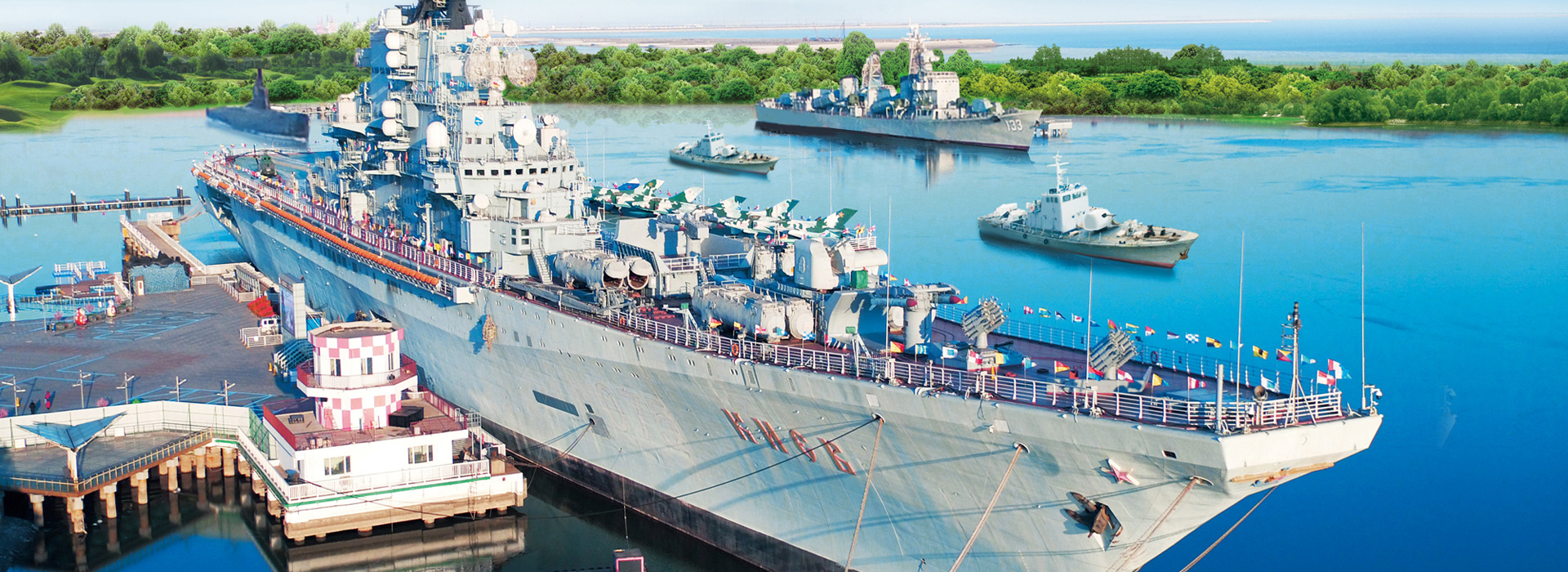
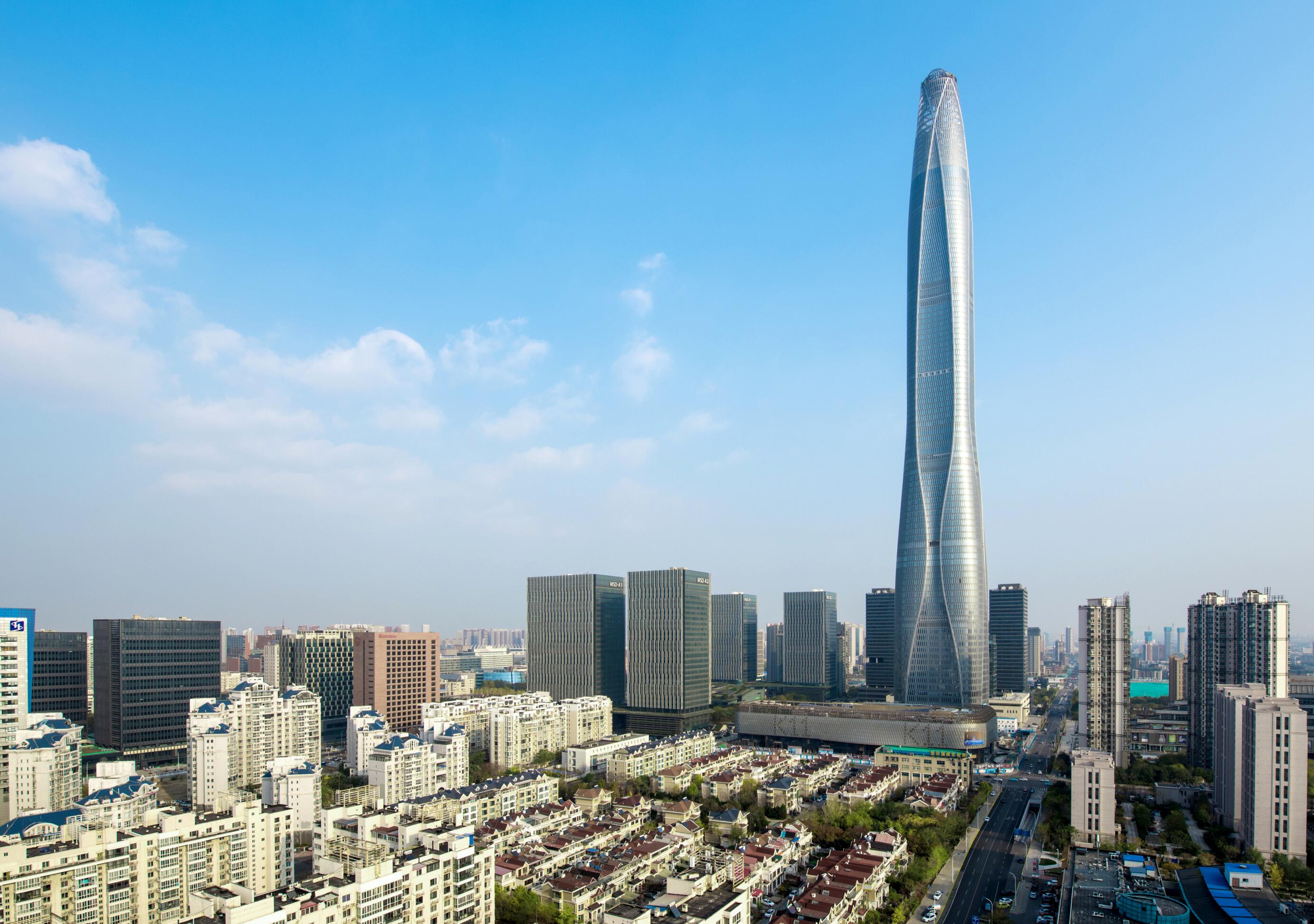

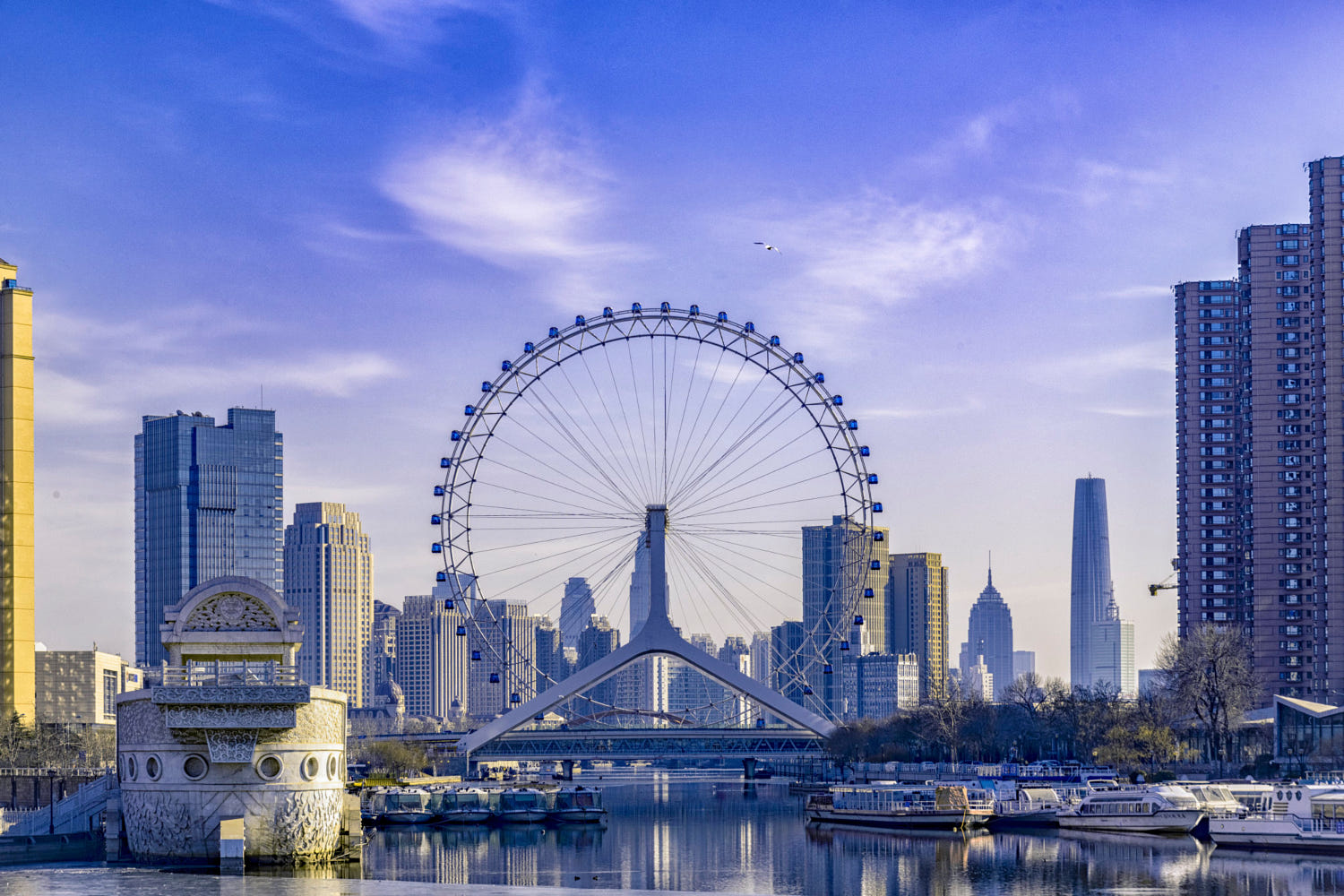
 音乐
音乐

 主题公园
主题公园
